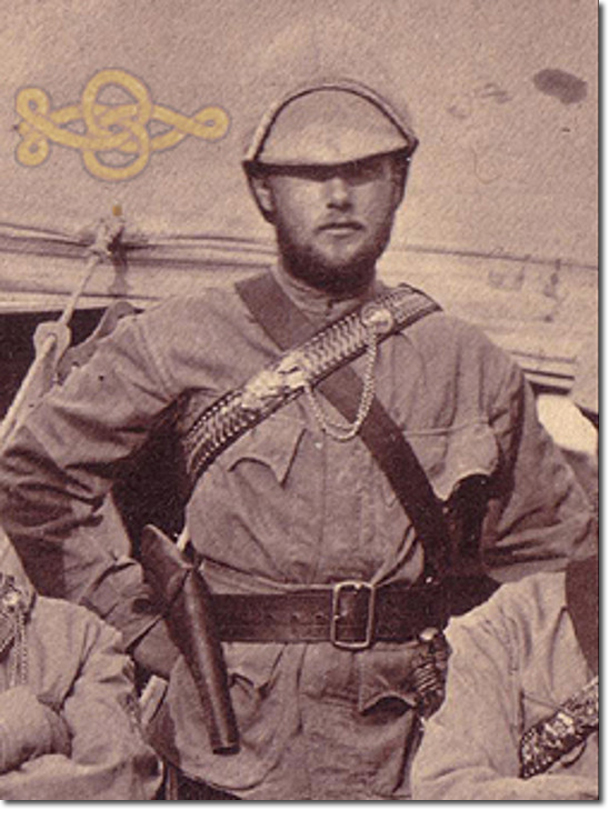|
|


|
| Francis Harvey Harford was born in March 1858 the second son of William Henry Harford and Ellen Tower. Initially he joined the army as an infantry ensign in the 16th Regiment on 22 Mar 1876 but transferred to the 10th Hussars on 24 Nov 1877, exchanging with R Tuite-Dalton according to the London Gazette. After a change in the way junior officer ranks were designated, any officers commissioned from 1877 onwards were titled 2nd lieutenant but because Francis Harford had obtained his commission in 1876 he was a sub lieutenant. He joined the regiment in India in early 1878, just after they had moved from Muttra to Rawalpindi in the Punjab. Later that year the 10th were mobilised to deal with trouble in Afghanistan, and the HQ and two squadrons of the 10th Hussars marched to join the Peshawar Field Force. They captured Ali Masjid and marched on to Jellalabad. On 21 Feb 1879 F Troop was sent to the Lughman Valley. This Troop was commanded by Captain Montagu Slade, who was later killed at El Teb, and included Sub Lt Harford and Lt Lord Ogilvy. They returned to camp at Jellalabad after 4 days. On 31 Mar 1879 one squadron of the 10th, under the command of Captain R C d’Esterre Spottiswoode, along with a squadron of the 11th Bengal Lancers was ordered to cross the Kabul river to take up a position in the rear of the enemy. This was a doomed venture and led to the death of William Harford. The crossing was made at night across a dangerous ford that formed an S shape in the river. The Bengal Lancers had managed to cross the river but the 10th inexplicably were swept away by the 6 mph current. The extent of the carnage was difficult to ascertain at first but it transpired that 47 men and 14 horses had drowned. Harford was the only officer. Two sergeants, 3 NCOs and 41 men, all loaded down with thick clothing, ammunition and rations, could not find their way to the bank in the freezing water. Sub Lieutenant Harford’s body was found by some villagers a mile down stream from the disaster. His sword was discovered in a tribesman’s hut 15 years later. The photo was borrowed from the Hussards Photos website. |
Armed Forces | Art and Culture | Articles | Biographies | Colonies | Discussion | Glossary | Home | Library | Links | Map Room | Sources and Media | Science and Technology | Search | Student Zone | Timelines | TV & Film | Wargames